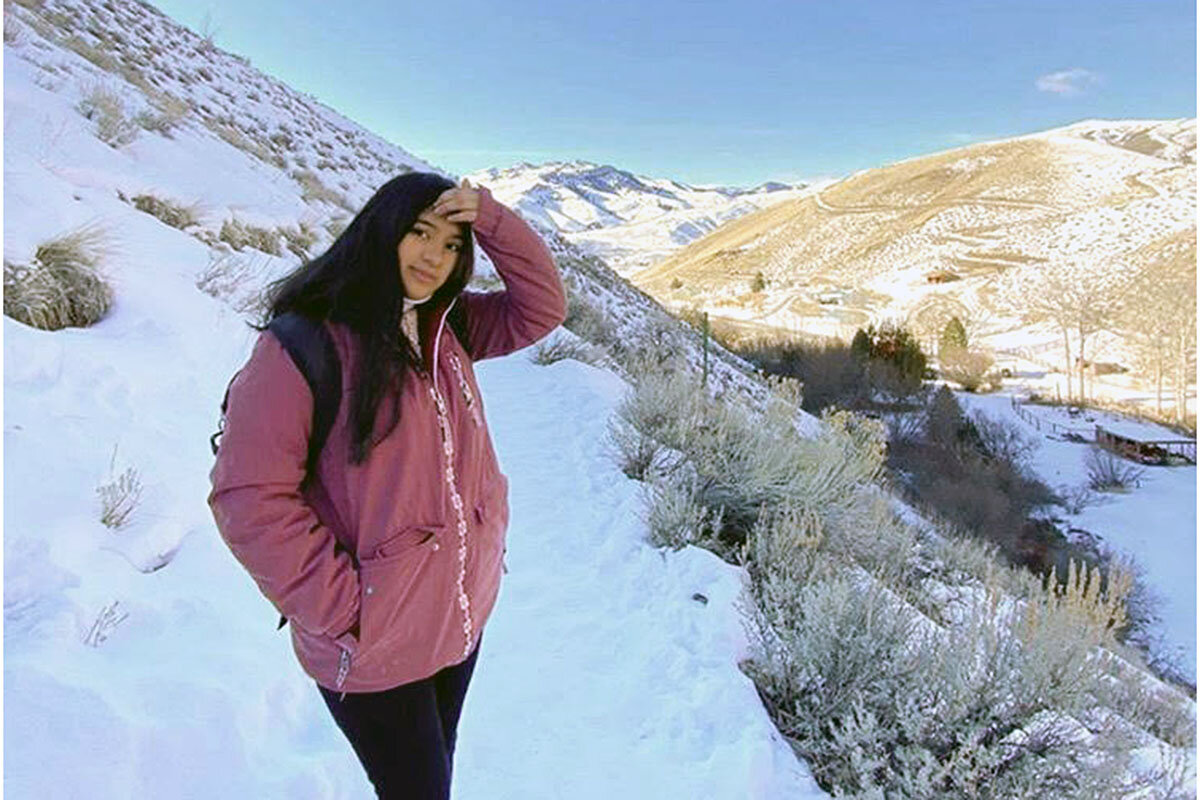Ski resorts expect a busy season. Can they find enough workers?
Loading...
Last winter, Angella Reyes spent every day working with a panoramic view of blue skies and snow-capped Smoky Mountains of Idaho.
Ms. Reyes, a university student studying architecture from Lima, Peru, spent her Southern Hemisphere summer break working as a dishwasher and pre-cook at a mountaintop eatery on Bald Mountain at Sun Valley Resort in Ketchum, Idaho.
“The people I met, the weather, the place was beautiful,” Ms. Reyes said. “A beautiful experience that I will never forget.”
Why We Wrote This
Even in a pandemic, people want to get outdoors. That dynamic may help ski resorts survive, but they are having to look closer to home for their staff.
But Ms. Reyes won’t return to Sun Valley this season, she said, due to President Donald Trump’s June 22 executive order to freeze some federal foreign visa programs – in efforts to promote job opportunities for Americans after unemployment skyrocketed due to the outbreak of COVID-19.
“I really feel bad because I miss Sun Valley so much,” Ms. Reyes said.
About 7,000 international seasonal workers like Ms. Reyes, usually from countries in the Southern Hemisphere, travel to the U.S. every year, making up 5% to 10% of the seasonal workforce at 470 resorts in 37 states, according to estimates from the National Ski Areas Association (NSAA).
With the more limited pool of workers available this year, U.S. ski resorts have been forced to make alternative recruiting plans. And with American consumers showing strong demand to be out on the slopes, the good news is that resorts are seeing an uptick in job applications from young people who don’t need to cross international borders. Some are college students and high school graduates who are deferring school for a year or taking online classes due to the impact of COVID-19.
“We’re still in the early days of our recruiting but we’re liking what we’re seeing,” said Dave Fields, president and general manager of Snowbird Resort in Utah. “People want to work outside in a healthy environment, to be in the mountains.”
Snowbird has had difficulty filling all seasonal positions in past winters, even with about 120 international workers last year, according to Mr. Fields. “That’s not as many as some resorts, but they play a pivotal role in our operations because many are returning year after year,” he said.
This year, he anticipates the resort will be able to hire staff in every position because the resort has received significant interest from locals.
The search for workers
Colleges across the U.S. are ending their in-person fall semesters once students go home for Thanksgiving and finishing their courses online until winter break to limit travel to and from campuses.
That doesn’t mean students are free from schoolwork. But Dave Byrd, NSAA director of risk and regulation, said the extended winter break and flexibility with online classes are contributing to increased interest in working at ski resorts.
“We have ironically and unexpectedly been able to take advantage of college students,” Mr. Byrd said.
In a typical year, international workers include holders of J-1 visas who fill entry-level jobs such as operating lifts, busing in lodge restaurants, maintenance, and other hospitality positions. Others are H-2B visa holders, usually professionals in their field, such as ski instructors or chefs at resorts.
Now that Joe Biden has won the 2020 U.S. presidential election, Mr. Byrd said the NSAA anticipates he will not renew the visa ban – set to expire at the end of 2020 – when he takes office in January 2021.
Several court cases have also challenged the order – the most recent of which on Oct. 1, when a U.S. District Court judge in California suspended the visa ban. There are still barriers standing between ski resorts and their ability to hire international workers in time for this season.
Ryan Huff, communications director at Vail Resorts, which owns 34 resorts in North America, said Vail is not pursuing international workers at this time, and is focusing its hiring efforts in local communities, many of which have shown interest.
A strong season ahead?
The recruiting efforts could help resorts meet what appears to be strong demand.
“Everything that we’re seeing points to a demand for outdoor recreation, also because open air activities tend to have a lower risk of transmission of COVID,” said Adrienne Isaac, director of marketing and communications for NSAA. “That’s huge for your mental and physical health as well, and skiing can offer people that opportunity.”
Ski resorts have new health protocols, such as socially distanced lift lines, reduced capacity in dining locations, and crowd limits on the slopes.
Despite the pandemic, Vail Resorts was able to mention an 18% rise in season pass sales in a September 2020 earnings report, compared with that same time last year. Sales may have increased due to new requirements to purchase passes ahead of time, but some experts still credit the demand to a desire to get outdoors this winter after pandemic lockdowns.
“People are excited to have this ability to have a respite from everything they’ve been dealing with the last several months,” said Mr. Huff at Vail Resorts, which has several of its ski mountains open already.
For Ms. Reyes in Peru, several factors still stand in the way of her ability to work at Sun Valley for another season. For ski resorts, one big uncertainty is a nationwide rise in coronavirus cases, but for now they are hopeful.
“If the public health realities continue to be in their favor – that’s key – we think it could actually be a decent season for them,” said Ms. Isaac of the industry association. “Maybe not a record one but a good one, all things considered.”
Editor’s note: As a public service, we have removed our paywall for all pandemic-related stories.







